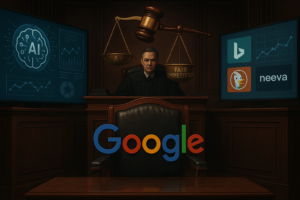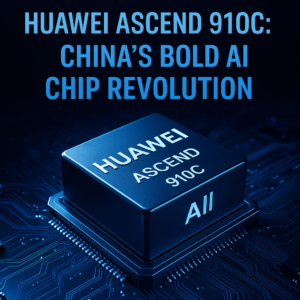The Rise of AI Artistry: How Ai-Da’s Portrait of Alan Turing is Reshaping the Art World
In a groundbreaking auction, Ai-Da, an AI-powered humanoid robot, is set to sell an abstract portrait of Alan Turing for an estimated $180,000. This historic moment not only highlights the intersection of technology and art but also sparks conversations about the future of creativity in the age of artificial intelligence.
Imagine a world where machines create masterpieces, blurring the lines between human creativity and artificial intelligence. This vision is becoming a reality as Ai-Da, a humanoid robot powered by AI, prepares to auction an abstract portrait of the legendary mathematician Alan Turing for an astonishing estimated price of $180,000. This event is not just a sale; it’s a pivotal moment in the evolution of art and technology.
Ai-Da’s artwork, titled “A.I. God: Portrait of Alan Turing,” is notable for being the first-ever piece created by a humanoid robot to be auctioned. Utilizing advanced algorithms, cameras, and robotic arms, Ai-Da produced a work that captures the essence of Turing, often hailed as the father of artificial intelligence. Turing’s contributions to computing and AI have paved the way for modern technology, making this portrait a fitting tribute to his legacy.
The auction, hosted by Sotheby’s, is generating excitement and curiosity within both the art and tech communities. Aidan Meller, the creator of Ai-Da, emphasizes that this artwork is distinctive because it physically manifests the creative capabilities of a robot. Meller states, “What makes this work of art different from other AI-generated works is that with Ai-Da there is a physical manifestation.” This statement underscores a significant discussion about the nature of creativity and authorship in the digital age.
Ai-Da’s approach to art is innovative, employing a “fractured and multi-layered” style that reflects the complexities of Turing’s life and work. According to statements attributed to Ai-Da, the painting embodies deeper emotional and intellectual layers, challenging viewers to consider what constitutes art and who can be an artist in an era dominated by advanced technology.
The sale’s proceeds are earmarked for further development of Ai-Da’s AI capabilities, which raises questions about the future of AI in creative fields. As machines become increasingly capable of producing art that resonates on an emotional level, the traditional definitions of artistry and creativity are being re-evaluated.
Michael Bouhanna, Sotheby’s head of NFT and digital art, notes that Ai-Da’s portrait is part of a broader trend pushing the boundaries of artistic creation. He posits that these works prompt vital discussions about how society can appreciate and experience the evolving possibilities around art-making in the 21st century.
This auction is more than just a financial transaction; it represents a cultural shift. As AI continues to permeate various aspects of life, from healthcare to autonomous systems, the art world is also embracing this technological revolution. The response from the public and collectors may signal a new era where AI-generated art is not only accepted but celebrated.
Ai-Da’s portrait of Alan Turing stands as a symbol of the confluence of art and artificial intelligence. As we witness this transformative moment in the art world, the future remains uncertain yet filled with potential, encouraging us to explore the depths of creativity in an age where machines are becoming our collaborators.


